Customer Effort Score (CES): Definition, Use-Case, Benefits, and more!
Learn everything there is to know about the Customer Effort Score (CES) and how it gives actionable insights on improving customer satisfaction.



Imagine you received a damaged product, and when reaching out to a customer service representative for a refund, you had to call multiple times and met with a long wait time on the phone. Sounds incredibly frustrating, right?
If a customer interacts with your business and has to jump through hoops to make a purchase or resolve a dispute, it decreases their chances of buying your products or services in the future. So, how do you know if customers have an effortless experience with your business?
That's where the Customer Effort Score (CES) comes in. CES is a critical metric that measures the effort level customers put in when interacting with a business or how easy it is to use a product or get help when needed.
Let’s dive in and understand what a CES score is and why measuring CES for customer satisfaction is important.
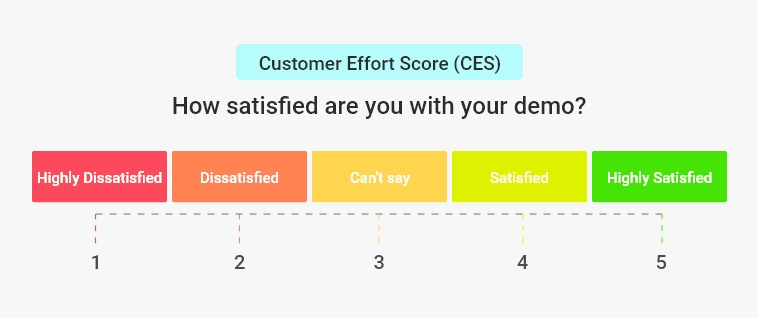
What is CES?
Customer Effort Score (CES) is a transactional metric designed to assess the level of ease of a particular interaction. It is used by businesses to measure the effort customers have to exert when interacting with their products or services.
Unlike traditional customer satisfaction metrics, CES focuses specifically on the ease of the customer experience rather than just their overall happiness.
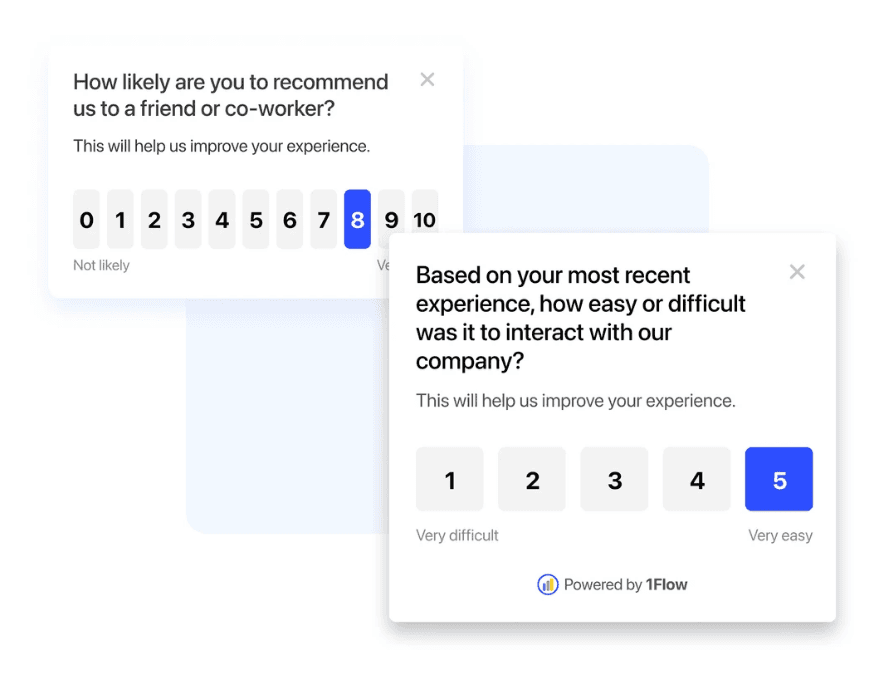
Understanding CES isn't just about knowing if customers are happy; it's about making their lives easier. By figuring out where customers face a high-effort interaction, businesses can make improvements to provide a smoother experience by identifying pain points along the user journey, increasing customer satisfaction, and reducing negative trends seen across their surveys.
It is calculated by asking customers to rate their interaction with a company's customer support on a scale from "very difficult" to "very easy."
Gartner found that 96% of customers with a high-effort service interaction become more disloyal compared to just 9% who have a low-effort experience. When customers have a positive and low-effort experience interacting with your business, they are far more likely to continue doing business with you in the future. This finding highlights the importance of using CES as a metric for businesses aiming to maintain long-term customer relationships and enhance customer retention efforts.
Improving your CES score would involve optimizing support channels, minimizing information repetition, and reducing wait times or transfers during customer interactions. Monitoring CES can lead to higher overall customer satisfaction scores (CSATs) and help you analyze purchasing patterns; you can also predict customer loyalty, create effective knowledge base articles, and reduce customer service costs.
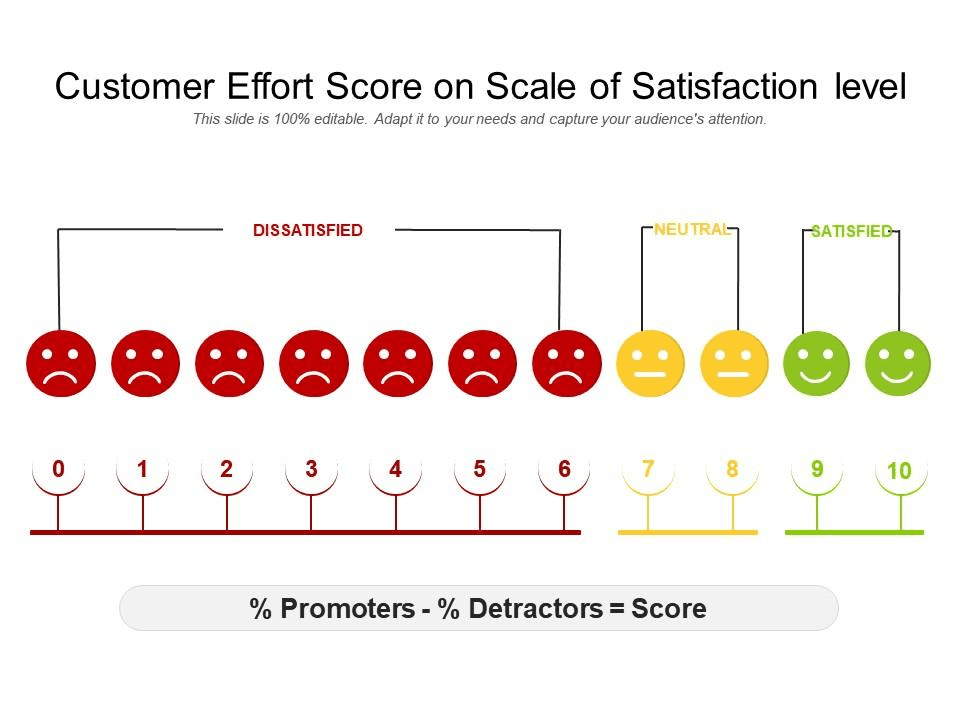
There are 3 types of CES surveys most companies use-
The 1–10 Scale: Customers rate their experience on a scale from "very difficult" to "very easy."
The 7-point scale: This 7-point rating scale ranges from "strongly disagree" to "strongly agree."
Agree/Disagree: Customers simply indicate whether they agree or disagree with statements.
Emoji Scale Method: Customers use emoticons to give an emotive response.
When to use CES?
Sending out your CES survey immediately at key customer journey touchpoints can provide deeper insights for improvement. Let’s look at these touchpoints to understand when to send CES Surveys:
During Customer Onboarding
86% of people say they’d be more likely to stay loyal to a business that invests in onboarding content that welcomes and educates them after they’ve bought. Offering an effortless onboarding experience is the key to customer retention.
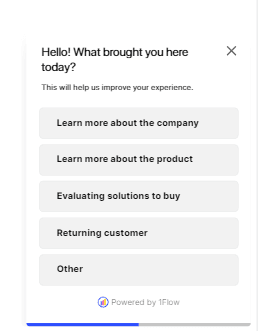
Send out CES surveys during the onboarding process and ask questions relevant to improving user experience. Your customer success team can analyze the answers from survey respondents and send out helpful materials like help center articles and videos.
Immediately after a purchase or subscription
Sending a survey immediately after purchase ensures that you capture your customers' immediate impressions and experiences while they are still fresh in their minds. This becomes an excellent strategy for obtaining real-time feedback regarding how easy or difficult it was for your customer.
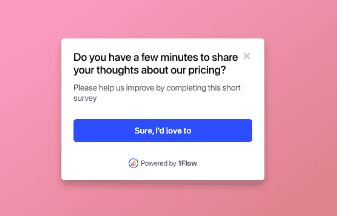
It can provide richer insights into areas where the buying process may be causing frustration or inconvenience for customers.
For example, if customers constantly report facing obstacles during checkout, such as payment processing issues, this feedback can signal the need for improvements in these areas. You can also re-survey customers with follow-up questions if they renew their subscription.
By continuously refining and optimizing the buying experience based on real-time feedback, businesses can enhance customer satisfaction, increase loyal customers, and drive business success.
Immediately after an interaction with your customer service team
Sending a customer effort score survey to customers after they've interacted with a customer service rep can help you quickly assess the effectiveness of your support team and identify areas where improvements are needed to enhance overall efficiency.
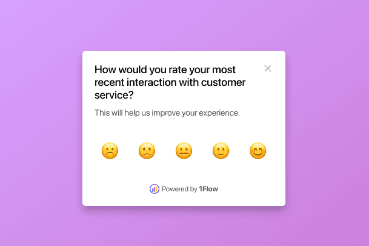
By gathering customer feedback right after their interaction with customer support, you can understand your customer’s perception of the level of effort they had to put in to resolve their issues.
For instance, if customers consistently say they had a high-effort experience, it could indicate inefficiencies within the support process, such as long wait times, complex procedures, or ineffective problem-solving.
💡With 1Flow, you can launch effective surveys to collect actionable customer feedback when customers browse your website or interact with your mobile app, improving overall customer satisfaction.
When should you use CES versus other CX metrics?
Many customer experience metrics can help you understand your customers. But how do you decide which ones are most relevant for your business? Find out when you should use CES, NPS, and CSAT to analyze customer expectations:
CES (Customer Effort Score)
Businesses use CES to pinpoint areas needing improvement by asking specific and simple questions tailored to different processes, such as making a purchase, navigating the website, or resolving customer issues. For instance, asking customers to rate the ease of making a purchase or finding information on the website provides valuable feedback for enhancing the overall customer experience.
CES evaluates satisfaction regarding a specific interaction and focuses on individual touchpoints. It should be
Sent immediately following each interaction to capture immediate feedback.
After Completing a purchase
After Contacting customer support
Navigating the website
Here are some examples of customer effort score questions:
How easy was it to complete your purchase today?
Did you encounter any difficulties while making your purchase?
How effortless was the checkout process on a scale of 1 to 5?

NPS (Net Promoter Score)
Net Promoter Score (NPS) measures how likely customers are to recommend a company to others. Instead of asking if customers are satisfied, it focuses on whether they'd tell friends or colleagues about the company.
It's based on one question: "How likely are you to recommend us to a friend or colleague?"
Customers rate their likelihood on a scale from 0 to 10. The idea behind NPS is that customers who are happy enough to recommend a company are likelier to stay loyal.
So, a high NPS suggests strong customer loyalty. By tracking NPS over time, companies can see how they're doing and find areas to improve customer satisfaction and loyalty.
Since Net Promoter Score (NPS) measures long-term customer loyalty, it’s ideal for you to
Run this survey at regular intervals
Send it Quarterly or annually to track trends over time
Send After specific events or milestones, such as completing onboarding or renewing a subscription
You can ask questions like:
On a 1-10 scale, how likely are you to recommend our company/product/service to a friend or colleague?
What specifically do you like most about our company/product/service?
What could we do to improve and earn a higher score from you?
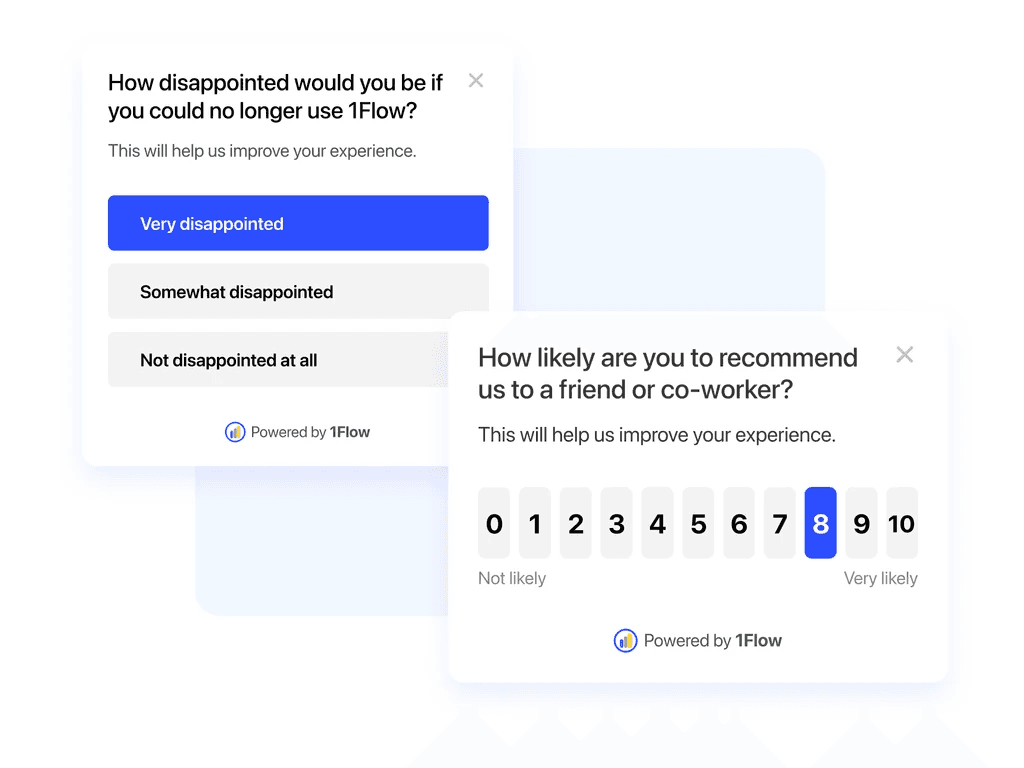
💡Also Read: How To Run in-app NPS? (With 7 examples)
CSAT (Customer Satisfaction Score)
CSAT allows clients to rate their satisfaction with your company, product, or service. After being asked, "How would you rank your overall happiness with us?", respondents score their satisfaction on a 5-point Likert scale ranging from highly unsatisfied (1) to very satisfied (5). It's a great way to gauge customer happiness at crucial touchpoints.
CSAT ratings demonstrate the impact of a team's efforts on consumers and can be used as a metric for both long-term relationships and individual transactions. It's best to conduct this survey after customers have had some experience with your business. CSAT assesses overall satisfaction with your product and service.
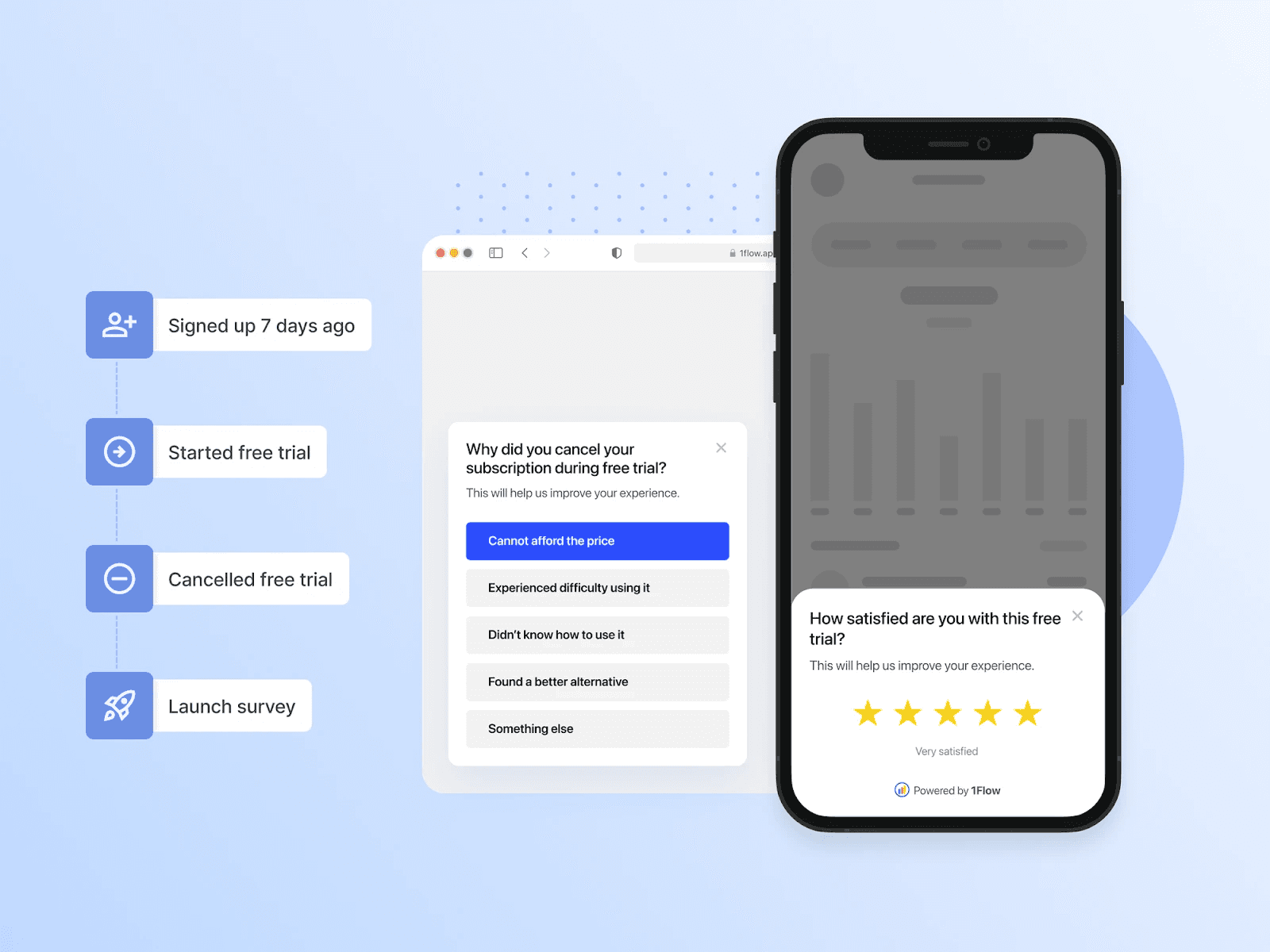
You can measure CSAT after specific touchpoints or transactions to assess satisfaction levels. These include:
After completing a purchase
Following the resolution of a customer service inquiry
Post-service or post-interaction feedback requests
💡Also read: What is CSAT Survey: The Ultimate Guide For Beginners
CES survey building tips
Keep the survey short
Customers are more likely to complete short and to-the-point surveys. Avoid overwhelming them with unnecessary customer survey questions that take too much time to complete, and ensure that the language used in your survey is simple and easy to understand. Avoid using any technical terms or industry jargon that may confuse customers.
For example, you can ask, "On a scale from 1 to 5, how easy was it to find the information you were looking for on our website?"
Provide context
Help customers understand the purpose of the survey and why their feedback is valuable. Explain how their responses will be used to improve the customer experience. For example, you can add a statement like “ Thank you for choosing to participate in our survey! Your feedback helps us improve our services to serve you in the future better.
Include open-ended questions
In addition to closed-ended questions with predefined response options, include open-ended questions that allow customers to provide detailed feedback in their own words.
Consider timing
Send the survey shortly after the customer's interaction with your company to capture their experience while it's still fresh in their mind. Avoid sending surveys too long after the interaction, as customers may not remember the details of their experience.
Offer incentives
Consider offering incentives, such as free product trials, discounts, etc, to encourage customers to complete the survey. However, do not incentivize customers to provide biased or dishonest feedback.

How to Improve your CES score
Ask for detailed feedback
Asking for detailed feedback allows businesses to understand the reasons behind customers' scores and address underlying issues effectively.
For example, ask your customers, "Why did you give us this score?" These questions allow customers to elaborate on their experiences, providing valuable insights into areas for improvement.
You can then address these pain points and make interactions easier for customers. Doing this demonstrates your commitment to customer satisfaction and increases the likelihood of retaining customers.
Here are some questions to ask
"What aspects of your experience with our product/service were most satisfying?"
"Were there any challenges or difficulties you encountered while using our product/service?"
"How could we have improved your experience with our company?"
Always ask open-ended questions
Ask open-ended questions as it allows customers to express their thoughts and feelings without being limited by predefined response options. This encourages customers to provide more detailed feedback and give genuine responses in their own words. Moreover, open-ended questions help avoid bias in responses, allowing customers to provide feedback that truly reflects their unique perspectives and experiences. You can ask questions like-
What aspects of our product/service do you find most valuable, and why?"
"How could we improve our product/service to meet your needs better?"
"Can you tell us about a specific interaction with our service representative? What did we do well, and what could we have done differently?"
Evaluate Customer Feedback Regularly
Reviewing your customers' feedback is crucial for understanding the reasons behind their CES ratings. Consider following up with buyers to inquire about any difficulties they encountered while using your product or service.
Additionally, segment your CES data to pinpoint areas for improvement. For instance, compare CES ratings across different customer service channels. If customers find it "very easy" to get assistance through phone support but "difficult" to navigate your help desk, it's evident where you need to focus your efforts.
Include AI-powered chatbots to handle common support requests.
Bots can swiftly answer basic questions, making interactions quicker and easier for customers. They also lighten the workload for your support team, especially when paired with other self-service options like FAQ pages and knowledge bases, allowing them to focus on more complex issues.

By cutting down on wait times and offering various resources for customers to find solutions independently, you're smoothing out the process and empowering buyers to resolve their queries efficiently.
Use a customer feedback tool
Manually sending out surveys to your entire customer base across different channels can get tedious. To successfully send out your surveys at the right time and to the right audience, you need a customer feedback tool to get the job done.
1flow is designed to help businesses seamlessly collect, analyze, and act on customer feedback. With 1flow's advanced features, you can personalize your surveys, making them more engaging and relevant to your target audience.
Calculating Customer Effort Score
The formula for CES involves adding all the individual customer effort scores obtained from surveys and dividing this total by the number of survey responses. The resulting figure provides an average measure of customers' effort when interacting with your company.
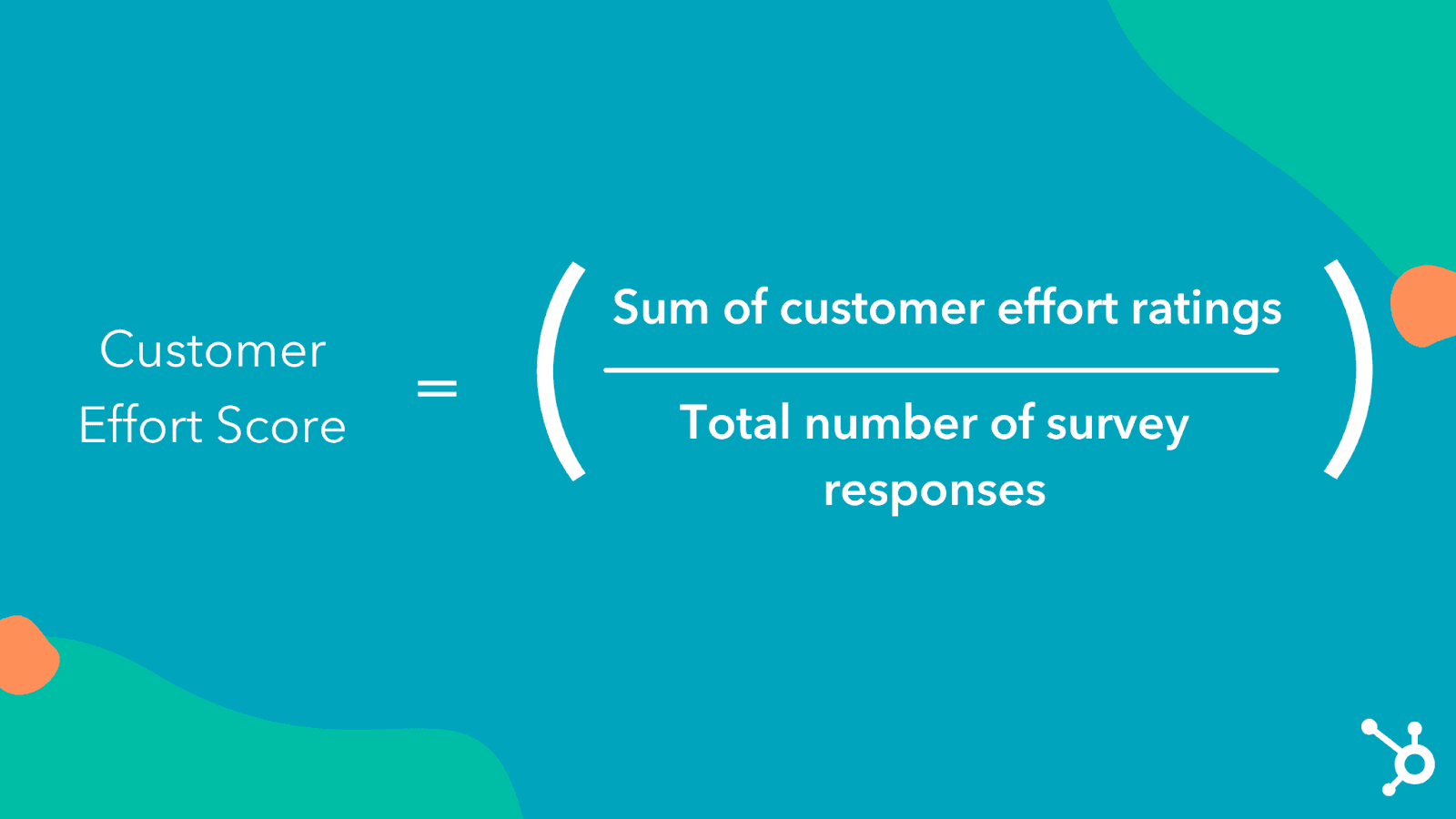
If you're using the emoji scale method, you must subtract the negative response percentages from the positive response percentages.
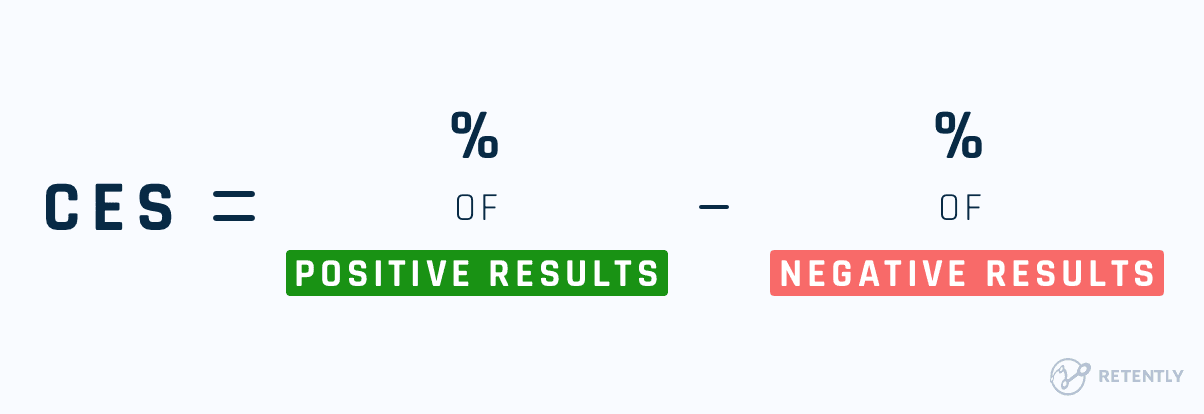
What's a good customer effort score?
There's no solid benchmarking foundation for CES across industries. Companies use different scales, and the level of effort required varies depending on the service provided.
Generally, aiming for an average score of 5 or 6 (on a 1-7 Likert scale) is a good rule of thumb. A perfect score of 7 might indicate customers didn't give honest feedback, possibly because the survey timing was off. If your score falls below 5, it's a sign that customers face challenges that need addressing.
Pros and cons of Calculating Customer Effort Score
Similar to other data collection methods, CES surveys have advantages and disadvantages. Here’s the overview ⬇️
Efficiency
Pros: Simple to implement and use
Cons: Must be sent immediately after customers have the experience to avoid inaccurate results.
Actionable
Pros: Provides precise and actionable insights, allowing for a detailed understanding of distinct areas of your business
Cons: Lack of customer segmentation by customer type or buyer journey
Focus
Pros: Offers a clear view of areas needing improvement, enabling businesses to prioritize initiatives and allocate resources effectively.
Cons: It only measures specific experiences rather than the overall effort required to interact with your company, potentially missing out on comprehensive insights into the end-to-end customer journey.
Cost-effective
Pros: Requires fewer resources to implement
Cons: Relies heavily on customer perception
Increase Your CES Response Rates with 1flow
If you want to ensure smoother customer experiences, you must invest in a customer feedback platform that can help you effectively measure your CX metrics. Enter: 1flow.
With 1flow, you can effortlessly measure your Customer Effort Score (CES) by deploying surveys directly to your users as they browse your website or use your mobile app.

1flow allows you to build contextual in-app surveys tailored to your needs, ensuring you target the right users with the right questions at precisely the right moments.
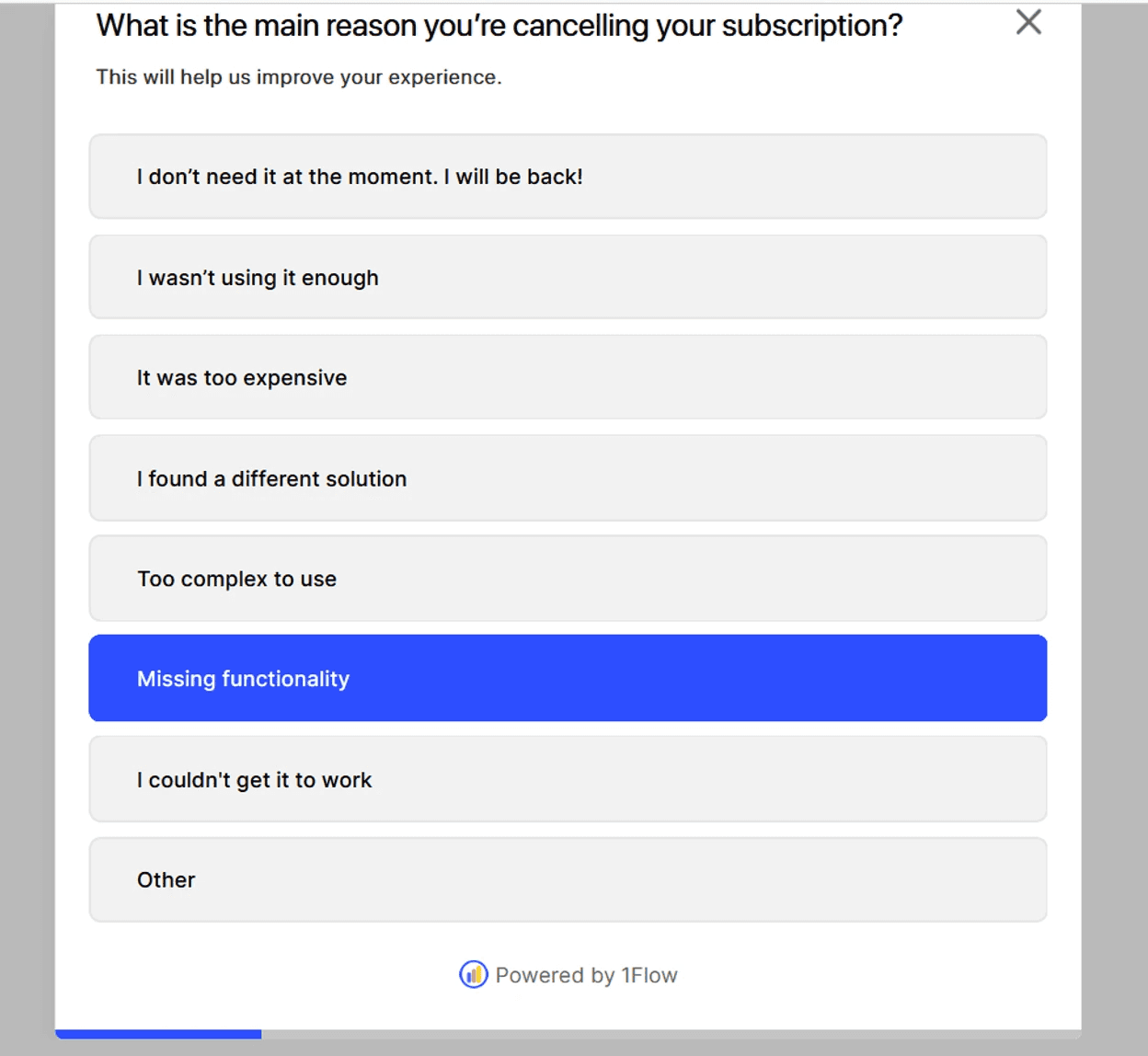
You can also use our AI co-pilot to create detailed customer feedback surveys in no time.
With an average response rate of 38% and access to actionable insights, 1flow empowers you to make data-driven decisions and reduce customer churn rate.
Sign up for a free trial today.
Imagine you received a damaged product, and when reaching out to a customer service representative for a refund, you had to call multiple times and met with a long wait time on the phone. Sounds incredibly frustrating, right?
If a customer interacts with your business and has to jump through hoops to make a purchase or resolve a dispute, it decreases their chances of buying your products or services in the future. So, how do you know if customers have an effortless experience with your business?
That's where the Customer Effort Score (CES) comes in. CES is a critical metric that measures the effort level customers put in when interacting with a business or how easy it is to use a product or get help when needed.
Let’s dive in and understand what a CES score is and why measuring CES for customer satisfaction is important.

What is CES?
Customer Effort Score (CES) is a transactional metric designed to assess the level of ease of a particular interaction. It is used by businesses to measure the effort customers have to exert when interacting with their products or services.
Unlike traditional customer satisfaction metrics, CES focuses specifically on the ease of the customer experience rather than just their overall happiness.

Understanding CES isn't just about knowing if customers are happy; it's about making their lives easier. By figuring out where customers face a high-effort interaction, businesses can make improvements to provide a smoother experience by identifying pain points along the user journey, increasing customer satisfaction, and reducing negative trends seen across their surveys.
It is calculated by asking customers to rate their interaction with a company's customer support on a scale from "very difficult" to "very easy."
Gartner found that 96% of customers with a high-effort service interaction become more disloyal compared to just 9% who have a low-effort experience. When customers have a positive and low-effort experience interacting with your business, they are far more likely to continue doing business with you in the future. This finding highlights the importance of using CES as a metric for businesses aiming to maintain long-term customer relationships and enhance customer retention efforts.
Improving your CES score would involve optimizing support channels, minimizing information repetition, and reducing wait times or transfers during customer interactions. Monitoring CES can lead to higher overall customer satisfaction scores (CSATs) and help you analyze purchasing patterns; you can also predict customer loyalty, create effective knowledge base articles, and reduce customer service costs.

There are 3 types of CES surveys most companies use-
The 1–10 Scale: Customers rate their experience on a scale from "very difficult" to "very easy."
The 7-point scale: This 7-point rating scale ranges from "strongly disagree" to "strongly agree."
Agree/Disagree: Customers simply indicate whether they agree or disagree with statements.
Emoji Scale Method: Customers use emoticons to give an emotive response.
When to use CES?
Sending out your CES survey immediately at key customer journey touchpoints can provide deeper insights for improvement. Let’s look at these touchpoints to understand when to send CES Surveys:
During Customer Onboarding
86% of people say they’d be more likely to stay loyal to a business that invests in onboarding content that welcomes and educates them after they’ve bought. Offering an effortless onboarding experience is the key to customer retention.

Send out CES surveys during the onboarding process and ask questions relevant to improving user experience. Your customer success team can analyze the answers from survey respondents and send out helpful materials like help center articles and videos.
Immediately after a purchase or subscription
Sending a survey immediately after purchase ensures that you capture your customers' immediate impressions and experiences while they are still fresh in their minds. This becomes an excellent strategy for obtaining real-time feedback regarding how easy or difficult it was for your customer.

It can provide richer insights into areas where the buying process may be causing frustration or inconvenience for customers.
For example, if customers constantly report facing obstacles during checkout, such as payment processing issues, this feedback can signal the need for improvements in these areas. You can also re-survey customers with follow-up questions if they renew their subscription.
By continuously refining and optimizing the buying experience based on real-time feedback, businesses can enhance customer satisfaction, increase loyal customers, and drive business success.
Immediately after an interaction with your customer service team
Sending a customer effort score survey to customers after they've interacted with a customer service rep can help you quickly assess the effectiveness of your support team and identify areas where improvements are needed to enhance overall efficiency.

By gathering customer feedback right after their interaction with customer support, you can understand your customer’s perception of the level of effort they had to put in to resolve their issues.
For instance, if customers consistently say they had a high-effort experience, it could indicate inefficiencies within the support process, such as long wait times, complex procedures, or ineffective problem-solving.
💡With 1Flow, you can launch effective surveys to collect actionable customer feedback when customers browse your website or interact with your mobile app, improving overall customer satisfaction.
When should you use CES versus other CX metrics?
Many customer experience metrics can help you understand your customers. But how do you decide which ones are most relevant for your business? Find out when you should use CES, NPS, and CSAT to analyze customer expectations:
CES (Customer Effort Score)
Businesses use CES to pinpoint areas needing improvement by asking specific and simple questions tailored to different processes, such as making a purchase, navigating the website, or resolving customer issues. For instance, asking customers to rate the ease of making a purchase or finding information on the website provides valuable feedback for enhancing the overall customer experience.
CES evaluates satisfaction regarding a specific interaction and focuses on individual touchpoints. It should be
Sent immediately following each interaction to capture immediate feedback.
After Completing a purchase
After Contacting customer support
Navigating the website
Here are some examples of customer effort score questions:
How easy was it to complete your purchase today?
Did you encounter any difficulties while making your purchase?
How effortless was the checkout process on a scale of 1 to 5?

NPS (Net Promoter Score)
Net Promoter Score (NPS) measures how likely customers are to recommend a company to others. Instead of asking if customers are satisfied, it focuses on whether they'd tell friends or colleagues about the company.
It's based on one question: "How likely are you to recommend us to a friend or colleague?"
Customers rate their likelihood on a scale from 0 to 10. The idea behind NPS is that customers who are happy enough to recommend a company are likelier to stay loyal.
So, a high NPS suggests strong customer loyalty. By tracking NPS over time, companies can see how they're doing and find areas to improve customer satisfaction and loyalty.
Since Net Promoter Score (NPS) measures long-term customer loyalty, it’s ideal for you to
Run this survey at regular intervals
Send it Quarterly or annually to track trends over time
Send After specific events or milestones, such as completing onboarding or renewing a subscription
You can ask questions like:
On a 1-10 scale, how likely are you to recommend our company/product/service to a friend or colleague?
What specifically do you like most about our company/product/service?
What could we do to improve and earn a higher score from you?

💡Also Read: How To Run in-app NPS? (With 7 examples)
CSAT (Customer Satisfaction Score)
CSAT allows clients to rate their satisfaction with your company, product, or service. After being asked, "How would you rank your overall happiness with us?", respondents score their satisfaction on a 5-point Likert scale ranging from highly unsatisfied (1) to very satisfied (5). It's a great way to gauge customer happiness at crucial touchpoints.
CSAT ratings demonstrate the impact of a team's efforts on consumers and can be used as a metric for both long-term relationships and individual transactions. It's best to conduct this survey after customers have had some experience with your business. CSAT assesses overall satisfaction with your product and service.

You can measure CSAT after specific touchpoints or transactions to assess satisfaction levels. These include:
After completing a purchase
Following the resolution of a customer service inquiry
Post-service or post-interaction feedback requests
💡Also read: What is CSAT Survey: The Ultimate Guide For Beginners
CES survey building tips
Keep the survey short
Customers are more likely to complete short and to-the-point surveys. Avoid overwhelming them with unnecessary customer survey questions that take too much time to complete, and ensure that the language used in your survey is simple and easy to understand. Avoid using any technical terms or industry jargon that may confuse customers.
For example, you can ask, "On a scale from 1 to 5, how easy was it to find the information you were looking for on our website?"
Provide context
Help customers understand the purpose of the survey and why their feedback is valuable. Explain how their responses will be used to improve the customer experience. For example, you can add a statement like “ Thank you for choosing to participate in our survey! Your feedback helps us improve our services to serve you in the future better.
Include open-ended questions
In addition to closed-ended questions with predefined response options, include open-ended questions that allow customers to provide detailed feedback in their own words.
Consider timing
Send the survey shortly after the customer's interaction with your company to capture their experience while it's still fresh in their mind. Avoid sending surveys too long after the interaction, as customers may not remember the details of their experience.
Offer incentives
Consider offering incentives, such as free product trials, discounts, etc, to encourage customers to complete the survey. However, do not incentivize customers to provide biased or dishonest feedback.

How to Improve your CES score
Ask for detailed feedback
Asking for detailed feedback allows businesses to understand the reasons behind customers' scores and address underlying issues effectively.
For example, ask your customers, "Why did you give us this score?" These questions allow customers to elaborate on their experiences, providing valuable insights into areas for improvement.
You can then address these pain points and make interactions easier for customers. Doing this demonstrates your commitment to customer satisfaction and increases the likelihood of retaining customers.
Here are some questions to ask
"What aspects of your experience with our product/service were most satisfying?"
"Were there any challenges or difficulties you encountered while using our product/service?"
"How could we have improved your experience with our company?"
Always ask open-ended questions
Ask open-ended questions as it allows customers to express their thoughts and feelings without being limited by predefined response options. This encourages customers to provide more detailed feedback and give genuine responses in their own words. Moreover, open-ended questions help avoid bias in responses, allowing customers to provide feedback that truly reflects their unique perspectives and experiences. You can ask questions like-
What aspects of our product/service do you find most valuable, and why?"
"How could we improve our product/service to meet your needs better?"
"Can you tell us about a specific interaction with our service representative? What did we do well, and what could we have done differently?"
Evaluate Customer Feedback Regularly
Reviewing your customers' feedback is crucial for understanding the reasons behind their CES ratings. Consider following up with buyers to inquire about any difficulties they encountered while using your product or service.
Additionally, segment your CES data to pinpoint areas for improvement. For instance, compare CES ratings across different customer service channels. If customers find it "very easy" to get assistance through phone support but "difficult" to navigate your help desk, it's evident where you need to focus your efforts.
Include AI-powered chatbots to handle common support requests.
Bots can swiftly answer basic questions, making interactions quicker and easier for customers. They also lighten the workload for your support team, especially when paired with other self-service options like FAQ pages and knowledge bases, allowing them to focus on more complex issues.

By cutting down on wait times and offering various resources for customers to find solutions independently, you're smoothing out the process and empowering buyers to resolve their queries efficiently.
Use a customer feedback tool
Manually sending out surveys to your entire customer base across different channels can get tedious. To successfully send out your surveys at the right time and to the right audience, you need a customer feedback tool to get the job done.
1flow is designed to help businesses seamlessly collect, analyze, and act on customer feedback. With 1flow's advanced features, you can personalize your surveys, making them more engaging and relevant to your target audience.
Calculating Customer Effort Score
The formula for CES involves adding all the individual customer effort scores obtained from surveys and dividing this total by the number of survey responses. The resulting figure provides an average measure of customers' effort when interacting with your company.

If you're using the emoji scale method, you must subtract the negative response percentages from the positive response percentages.

What's a good customer effort score?
There's no solid benchmarking foundation for CES across industries. Companies use different scales, and the level of effort required varies depending on the service provided.
Generally, aiming for an average score of 5 or 6 (on a 1-7 Likert scale) is a good rule of thumb. A perfect score of 7 might indicate customers didn't give honest feedback, possibly because the survey timing was off. If your score falls below 5, it's a sign that customers face challenges that need addressing.
Pros and cons of Calculating Customer Effort Score
Similar to other data collection methods, CES surveys have advantages and disadvantages. Here’s the overview ⬇️
Efficiency
Pros: Simple to implement and use
Cons: Must be sent immediately after customers have the experience to avoid inaccurate results.
Actionable
Pros: Provides precise and actionable insights, allowing for a detailed understanding of distinct areas of your business
Cons: Lack of customer segmentation by customer type or buyer journey
Focus
Pros: Offers a clear view of areas needing improvement, enabling businesses to prioritize initiatives and allocate resources effectively.
Cons: It only measures specific experiences rather than the overall effort required to interact with your company, potentially missing out on comprehensive insights into the end-to-end customer journey.
Cost-effective
Pros: Requires fewer resources to implement
Cons: Relies heavily on customer perception
Increase Your CES Response Rates with 1flow
If you want to ensure smoother customer experiences, you must invest in a customer feedback platform that can help you effectively measure your CX metrics. Enter: 1flow.
With 1flow, you can effortlessly measure your Customer Effort Score (CES) by deploying surveys directly to your users as they browse your website or use your mobile app.

1flow allows you to build contextual in-app surveys tailored to your needs, ensuring you target the right users with the right questions at precisely the right moments.

You can also use our AI co-pilot to create detailed customer feedback surveys in no time.
With an average response rate of 38% and access to actionable insights, 1flow empowers you to make data-driven decisions and reduce customer churn rate.
Sign up for a free trial today.
Imagine you received a damaged product, and when reaching out to a customer service representative for a refund, you had to call multiple times and met with a long wait time on the phone. Sounds incredibly frustrating, right?
If a customer interacts with your business and has to jump through hoops to make a purchase or resolve a dispute, it decreases their chances of buying your products or services in the future. So, how do you know if customers have an effortless experience with your business?
That's where the Customer Effort Score (CES) comes in. CES is a critical metric that measures the effort level customers put in when interacting with a business or how easy it is to use a product or get help when needed.
Let’s dive in and understand what a CES score is and why measuring CES for customer satisfaction is important.

What is CES?
Customer Effort Score (CES) is a transactional metric designed to assess the level of ease of a particular interaction. It is used by businesses to measure the effort customers have to exert when interacting with their products or services.
Unlike traditional customer satisfaction metrics, CES focuses specifically on the ease of the customer experience rather than just their overall happiness.

Understanding CES isn't just about knowing if customers are happy; it's about making their lives easier. By figuring out where customers face a high-effort interaction, businesses can make improvements to provide a smoother experience by identifying pain points along the user journey, increasing customer satisfaction, and reducing negative trends seen across their surveys.
It is calculated by asking customers to rate their interaction with a company's customer support on a scale from "very difficult" to "very easy."
Gartner found that 96% of customers with a high-effort service interaction become more disloyal compared to just 9% who have a low-effort experience. When customers have a positive and low-effort experience interacting with your business, they are far more likely to continue doing business with you in the future. This finding highlights the importance of using CES as a metric for businesses aiming to maintain long-term customer relationships and enhance customer retention efforts.
Improving your CES score would involve optimizing support channels, minimizing information repetition, and reducing wait times or transfers during customer interactions. Monitoring CES can lead to higher overall customer satisfaction scores (CSATs) and help you analyze purchasing patterns; you can also predict customer loyalty, create effective knowledge base articles, and reduce customer service costs.

There are 3 types of CES surveys most companies use-
The 1–10 Scale: Customers rate their experience on a scale from "very difficult" to "very easy."
The 7-point scale: This 7-point rating scale ranges from "strongly disagree" to "strongly agree."
Agree/Disagree: Customers simply indicate whether they agree or disagree with statements.
Emoji Scale Method: Customers use emoticons to give an emotive response.
When to use CES?
Sending out your CES survey immediately at key customer journey touchpoints can provide deeper insights for improvement. Let’s look at these touchpoints to understand when to send CES Surveys:
During Customer Onboarding
86% of people say they’d be more likely to stay loyal to a business that invests in onboarding content that welcomes and educates them after they’ve bought. Offering an effortless onboarding experience is the key to customer retention.

Send out CES surveys during the onboarding process and ask questions relevant to improving user experience. Your customer success team can analyze the answers from survey respondents and send out helpful materials like help center articles and videos.
Immediately after a purchase or subscription
Sending a survey immediately after purchase ensures that you capture your customers' immediate impressions and experiences while they are still fresh in their minds. This becomes an excellent strategy for obtaining real-time feedback regarding how easy or difficult it was for your customer.

It can provide richer insights into areas where the buying process may be causing frustration or inconvenience for customers.
For example, if customers constantly report facing obstacles during checkout, such as payment processing issues, this feedback can signal the need for improvements in these areas. You can also re-survey customers with follow-up questions if they renew their subscription.
By continuously refining and optimizing the buying experience based on real-time feedback, businesses can enhance customer satisfaction, increase loyal customers, and drive business success.
Immediately after an interaction with your customer service team
Sending a customer effort score survey to customers after they've interacted with a customer service rep can help you quickly assess the effectiveness of your support team and identify areas where improvements are needed to enhance overall efficiency.

By gathering customer feedback right after their interaction with customer support, you can understand your customer’s perception of the level of effort they had to put in to resolve their issues.
For instance, if customers consistently say they had a high-effort experience, it could indicate inefficiencies within the support process, such as long wait times, complex procedures, or ineffective problem-solving.
💡With 1Flow, you can launch effective surveys to collect actionable customer feedback when customers browse your website or interact with your mobile app, improving overall customer satisfaction.
When should you use CES versus other CX metrics?
Many customer experience metrics can help you understand your customers. But how do you decide which ones are most relevant for your business? Find out when you should use CES, NPS, and CSAT to analyze customer expectations:
CES (Customer Effort Score)
Businesses use CES to pinpoint areas needing improvement by asking specific and simple questions tailored to different processes, such as making a purchase, navigating the website, or resolving customer issues. For instance, asking customers to rate the ease of making a purchase or finding information on the website provides valuable feedback for enhancing the overall customer experience.
CES evaluates satisfaction regarding a specific interaction and focuses on individual touchpoints. It should be
Sent immediately following each interaction to capture immediate feedback.
After Completing a purchase
After Contacting customer support
Navigating the website
Here are some examples of customer effort score questions:
How easy was it to complete your purchase today?
Did you encounter any difficulties while making your purchase?
How effortless was the checkout process on a scale of 1 to 5?

NPS (Net Promoter Score)
Net Promoter Score (NPS) measures how likely customers are to recommend a company to others. Instead of asking if customers are satisfied, it focuses on whether they'd tell friends or colleagues about the company.
It's based on one question: "How likely are you to recommend us to a friend or colleague?"
Customers rate their likelihood on a scale from 0 to 10. The idea behind NPS is that customers who are happy enough to recommend a company are likelier to stay loyal.
So, a high NPS suggests strong customer loyalty. By tracking NPS over time, companies can see how they're doing and find areas to improve customer satisfaction and loyalty.
Since Net Promoter Score (NPS) measures long-term customer loyalty, it’s ideal for you to
Run this survey at regular intervals
Send it Quarterly or annually to track trends over time
Send After specific events or milestones, such as completing onboarding or renewing a subscription
You can ask questions like:
On a 1-10 scale, how likely are you to recommend our company/product/service to a friend or colleague?
What specifically do you like most about our company/product/service?
What could we do to improve and earn a higher score from you?

💡Also Read: How To Run in-app NPS? (With 7 examples)
CSAT (Customer Satisfaction Score)
CSAT allows clients to rate their satisfaction with your company, product, or service. After being asked, "How would you rank your overall happiness with us?", respondents score their satisfaction on a 5-point Likert scale ranging from highly unsatisfied (1) to very satisfied (5). It's a great way to gauge customer happiness at crucial touchpoints.
CSAT ratings demonstrate the impact of a team's efforts on consumers and can be used as a metric for both long-term relationships and individual transactions. It's best to conduct this survey after customers have had some experience with your business. CSAT assesses overall satisfaction with your product and service.

You can measure CSAT after specific touchpoints or transactions to assess satisfaction levels. These include:
After completing a purchase
Following the resolution of a customer service inquiry
Post-service or post-interaction feedback requests
💡Also read: What is CSAT Survey: The Ultimate Guide For Beginners
CES survey building tips
Keep the survey short
Customers are more likely to complete short and to-the-point surveys. Avoid overwhelming them with unnecessary customer survey questions that take too much time to complete, and ensure that the language used in your survey is simple and easy to understand. Avoid using any technical terms or industry jargon that may confuse customers.
For example, you can ask, "On a scale from 1 to 5, how easy was it to find the information you were looking for on our website?"
Provide context
Help customers understand the purpose of the survey and why their feedback is valuable. Explain how their responses will be used to improve the customer experience. For example, you can add a statement like “ Thank you for choosing to participate in our survey! Your feedback helps us improve our services to serve you in the future better.
Include open-ended questions
In addition to closed-ended questions with predefined response options, include open-ended questions that allow customers to provide detailed feedback in their own words.
Consider timing
Send the survey shortly after the customer's interaction with your company to capture their experience while it's still fresh in their mind. Avoid sending surveys too long after the interaction, as customers may not remember the details of their experience.
Offer incentives
Consider offering incentives, such as free product trials, discounts, etc, to encourage customers to complete the survey. However, do not incentivize customers to provide biased or dishonest feedback.

How to Improve your CES score
Ask for detailed feedback
Asking for detailed feedback allows businesses to understand the reasons behind customers' scores and address underlying issues effectively.
For example, ask your customers, "Why did you give us this score?" These questions allow customers to elaborate on their experiences, providing valuable insights into areas for improvement.
You can then address these pain points and make interactions easier for customers. Doing this demonstrates your commitment to customer satisfaction and increases the likelihood of retaining customers.
Here are some questions to ask
"What aspects of your experience with our product/service were most satisfying?"
"Were there any challenges or difficulties you encountered while using our product/service?"
"How could we have improved your experience with our company?"
Always ask open-ended questions
Ask open-ended questions as it allows customers to express their thoughts and feelings without being limited by predefined response options. This encourages customers to provide more detailed feedback and give genuine responses in their own words. Moreover, open-ended questions help avoid bias in responses, allowing customers to provide feedback that truly reflects their unique perspectives and experiences. You can ask questions like-
What aspects of our product/service do you find most valuable, and why?"
"How could we improve our product/service to meet your needs better?"
"Can you tell us about a specific interaction with our service representative? What did we do well, and what could we have done differently?"
Evaluate Customer Feedback Regularly
Reviewing your customers' feedback is crucial for understanding the reasons behind their CES ratings. Consider following up with buyers to inquire about any difficulties they encountered while using your product or service.
Additionally, segment your CES data to pinpoint areas for improvement. For instance, compare CES ratings across different customer service channels. If customers find it "very easy" to get assistance through phone support but "difficult" to navigate your help desk, it's evident where you need to focus your efforts.
Include AI-powered chatbots to handle common support requests.
Bots can swiftly answer basic questions, making interactions quicker and easier for customers. They also lighten the workload for your support team, especially when paired with other self-service options like FAQ pages and knowledge bases, allowing them to focus on more complex issues.

By cutting down on wait times and offering various resources for customers to find solutions independently, you're smoothing out the process and empowering buyers to resolve their queries efficiently.
Use a customer feedback tool
Manually sending out surveys to your entire customer base across different channels can get tedious. To successfully send out your surveys at the right time and to the right audience, you need a customer feedback tool to get the job done.
1flow is designed to help businesses seamlessly collect, analyze, and act on customer feedback. With 1flow's advanced features, you can personalize your surveys, making them more engaging and relevant to your target audience.
Calculating Customer Effort Score
The formula for CES involves adding all the individual customer effort scores obtained from surveys and dividing this total by the number of survey responses. The resulting figure provides an average measure of customers' effort when interacting with your company.

If you're using the emoji scale method, you must subtract the negative response percentages from the positive response percentages.

What's a good customer effort score?
There's no solid benchmarking foundation for CES across industries. Companies use different scales, and the level of effort required varies depending on the service provided.
Generally, aiming for an average score of 5 or 6 (on a 1-7 Likert scale) is a good rule of thumb. A perfect score of 7 might indicate customers didn't give honest feedback, possibly because the survey timing was off. If your score falls below 5, it's a sign that customers face challenges that need addressing.
Pros and cons of Calculating Customer Effort Score
Similar to other data collection methods, CES surveys have advantages and disadvantages. Here’s the overview ⬇️
Efficiency
Pros: Simple to implement and use
Cons: Must be sent immediately after customers have the experience to avoid inaccurate results.
Actionable
Pros: Provides precise and actionable insights, allowing for a detailed understanding of distinct areas of your business
Cons: Lack of customer segmentation by customer type or buyer journey
Focus
Pros: Offers a clear view of areas needing improvement, enabling businesses to prioritize initiatives and allocate resources effectively.
Cons: It only measures specific experiences rather than the overall effort required to interact with your company, potentially missing out on comprehensive insights into the end-to-end customer journey.
Cost-effective
Pros: Requires fewer resources to implement
Cons: Relies heavily on customer perception
Increase Your CES Response Rates with 1flow
If you want to ensure smoother customer experiences, you must invest in a customer feedback platform that can help you effectively measure your CX metrics. Enter: 1flow.
With 1flow, you can effortlessly measure your Customer Effort Score (CES) by deploying surveys directly to your users as they browse your website or use your mobile app.

1flow allows you to build contextual in-app surveys tailored to your needs, ensuring you target the right users with the right questions at precisely the right moments.

You can also use our AI co-pilot to create detailed customer feedback surveys in no time.
With an average response rate of 38% and access to actionable insights, 1flow empowers you to make data-driven decisions and reduce customer churn rate.
Sign up for a free trial today.
Imagine you received a damaged product, and when reaching out to a customer service representative for a refund, you had to call multiple times and met with a long wait time on the phone. Sounds incredibly frustrating, right?
If a customer interacts with your business and has to jump through hoops to make a purchase or resolve a dispute, it decreases their chances of buying your products or services in the future. So, how do you know if customers have an effortless experience with your business?
That's where the Customer Effort Score (CES) comes in. CES is a critical metric that measures the effort level customers put in when interacting with a business or how easy it is to use a product or get help when needed.
Let’s dive in and understand what a CES score is and why measuring CES for customer satisfaction is important.

What is CES?
Customer Effort Score (CES) is a transactional metric designed to assess the level of ease of a particular interaction. It is used by businesses to measure the effort customers have to exert when interacting with their products or services.
Unlike traditional customer satisfaction metrics, CES focuses specifically on the ease of the customer experience rather than just their overall happiness.

Understanding CES isn't just about knowing if customers are happy; it's about making their lives easier. By figuring out where customers face a high-effort interaction, businesses can make improvements to provide a smoother experience by identifying pain points along the user journey, increasing customer satisfaction, and reducing negative trends seen across their surveys.
It is calculated by asking customers to rate their interaction with a company's customer support on a scale from "very difficult" to "very easy."
Gartner found that 96% of customers with a high-effort service interaction become more disloyal compared to just 9% who have a low-effort experience. When customers have a positive and low-effort experience interacting with your business, they are far more likely to continue doing business with you in the future. This finding highlights the importance of using CES as a metric for businesses aiming to maintain long-term customer relationships and enhance customer retention efforts.
Improving your CES score would involve optimizing support channels, minimizing information repetition, and reducing wait times or transfers during customer interactions. Monitoring CES can lead to higher overall customer satisfaction scores (CSATs) and help you analyze purchasing patterns; you can also predict customer loyalty, create effective knowledge base articles, and reduce customer service costs.

There are 3 types of CES surveys most companies use-
The 1–10 Scale: Customers rate their experience on a scale from "very difficult" to "very easy."
The 7-point scale: This 7-point rating scale ranges from "strongly disagree" to "strongly agree."
Agree/Disagree: Customers simply indicate whether they agree or disagree with statements.
Emoji Scale Method: Customers use emoticons to give an emotive response.
When to use CES?
Sending out your CES survey immediately at key customer journey touchpoints can provide deeper insights for improvement. Let’s look at these touchpoints to understand when to send CES Surveys:
During Customer Onboarding
86% of people say they’d be more likely to stay loyal to a business that invests in onboarding content that welcomes and educates them after they’ve bought. Offering an effortless onboarding experience is the key to customer retention.

Send out CES surveys during the onboarding process and ask questions relevant to improving user experience. Your customer success team can analyze the answers from survey respondents and send out helpful materials like help center articles and videos.
Immediately after a purchase or subscription
Sending a survey immediately after purchase ensures that you capture your customers' immediate impressions and experiences while they are still fresh in their minds. This becomes an excellent strategy for obtaining real-time feedback regarding how easy or difficult it was for your customer.

It can provide richer insights into areas where the buying process may be causing frustration or inconvenience for customers.
For example, if customers constantly report facing obstacles during checkout, such as payment processing issues, this feedback can signal the need for improvements in these areas. You can also re-survey customers with follow-up questions if they renew their subscription.
By continuously refining and optimizing the buying experience based on real-time feedback, businesses can enhance customer satisfaction, increase loyal customers, and drive business success.
Immediately after an interaction with your customer service team
Sending a customer effort score survey to customers after they've interacted with a customer service rep can help you quickly assess the effectiveness of your support team and identify areas where improvements are needed to enhance overall efficiency.

By gathering customer feedback right after their interaction with customer support, you can understand your customer’s perception of the level of effort they had to put in to resolve their issues.
For instance, if customers consistently say they had a high-effort experience, it could indicate inefficiencies within the support process, such as long wait times, complex procedures, or ineffective problem-solving.
💡With 1Flow, you can launch effective surveys to collect actionable customer feedback when customers browse your website or interact with your mobile app, improving overall customer satisfaction.
When should you use CES versus other CX metrics?
Many customer experience metrics can help you understand your customers. But how do you decide which ones are most relevant for your business? Find out when you should use CES, NPS, and CSAT to analyze customer expectations:
CES (Customer Effort Score)
Businesses use CES to pinpoint areas needing improvement by asking specific and simple questions tailored to different processes, such as making a purchase, navigating the website, or resolving customer issues. For instance, asking customers to rate the ease of making a purchase or finding information on the website provides valuable feedback for enhancing the overall customer experience.
CES evaluates satisfaction regarding a specific interaction and focuses on individual touchpoints. It should be
Sent immediately following each interaction to capture immediate feedback.
After Completing a purchase
After Contacting customer support
Navigating the website
Here are some examples of customer effort score questions:
How easy was it to complete your purchase today?
Did you encounter any difficulties while making your purchase?
How effortless was the checkout process on a scale of 1 to 5?

NPS (Net Promoter Score)
Net Promoter Score (NPS) measures how likely customers are to recommend a company to others. Instead of asking if customers are satisfied, it focuses on whether they'd tell friends or colleagues about the company.
It's based on one question: "How likely are you to recommend us to a friend or colleague?"
Customers rate their likelihood on a scale from 0 to 10. The idea behind NPS is that customers who are happy enough to recommend a company are likelier to stay loyal.
So, a high NPS suggests strong customer loyalty. By tracking NPS over time, companies can see how they're doing and find areas to improve customer satisfaction and loyalty.
Since Net Promoter Score (NPS) measures long-term customer loyalty, it’s ideal for you to
Run this survey at regular intervals
Send it Quarterly or annually to track trends over time
Send After specific events or milestones, such as completing onboarding or renewing a subscription
You can ask questions like:
On a 1-10 scale, how likely are you to recommend our company/product/service to a friend or colleague?
What specifically do you like most about our company/product/service?
What could we do to improve and earn a higher score from you?

💡Also Read: How To Run in-app NPS? (With 7 examples)
CSAT (Customer Satisfaction Score)
CSAT allows clients to rate their satisfaction with your company, product, or service. After being asked, "How would you rank your overall happiness with us?", respondents score their satisfaction on a 5-point Likert scale ranging from highly unsatisfied (1) to very satisfied (5). It's a great way to gauge customer happiness at crucial touchpoints.
CSAT ratings demonstrate the impact of a team's efforts on consumers and can be used as a metric for both long-term relationships and individual transactions. It's best to conduct this survey after customers have had some experience with your business. CSAT assesses overall satisfaction with your product and service.

You can measure CSAT after specific touchpoints or transactions to assess satisfaction levels. These include:
After completing a purchase
Following the resolution of a customer service inquiry
Post-service or post-interaction feedback requests
💡Also read: What is CSAT Survey: The Ultimate Guide For Beginners
CES survey building tips
Keep the survey short
Customers are more likely to complete short and to-the-point surveys. Avoid overwhelming them with unnecessary customer survey questions that take too much time to complete, and ensure that the language used in your survey is simple and easy to understand. Avoid using any technical terms or industry jargon that may confuse customers.
For example, you can ask, "On a scale from 1 to 5, how easy was it to find the information you were looking for on our website?"
Provide context
Help customers understand the purpose of the survey and why their feedback is valuable. Explain how their responses will be used to improve the customer experience. For example, you can add a statement like “ Thank you for choosing to participate in our survey! Your feedback helps us improve our services to serve you in the future better.
Include open-ended questions
In addition to closed-ended questions with predefined response options, include open-ended questions that allow customers to provide detailed feedback in their own words.
Consider timing
Send the survey shortly after the customer's interaction with your company to capture their experience while it's still fresh in their mind. Avoid sending surveys too long after the interaction, as customers may not remember the details of their experience.
Offer incentives
Consider offering incentives, such as free product trials, discounts, etc, to encourage customers to complete the survey. However, do not incentivize customers to provide biased or dishonest feedback.

How to Improve your CES score
Ask for detailed feedback
Asking for detailed feedback allows businesses to understand the reasons behind customers' scores and address underlying issues effectively.
For example, ask your customers, "Why did you give us this score?" These questions allow customers to elaborate on their experiences, providing valuable insights into areas for improvement.
You can then address these pain points and make interactions easier for customers. Doing this demonstrates your commitment to customer satisfaction and increases the likelihood of retaining customers.
Here are some questions to ask
"What aspects of your experience with our product/service were most satisfying?"
"Were there any challenges or difficulties you encountered while using our product/service?"
"How could we have improved your experience with our company?"
Always ask open-ended questions
Ask open-ended questions as it allows customers to express their thoughts and feelings without being limited by predefined response options. This encourages customers to provide more detailed feedback and give genuine responses in their own words. Moreover, open-ended questions help avoid bias in responses, allowing customers to provide feedback that truly reflects their unique perspectives and experiences. You can ask questions like-
What aspects of our product/service do you find most valuable, and why?"
"How could we improve our product/service to meet your needs better?"
"Can you tell us about a specific interaction with our service representative? What did we do well, and what could we have done differently?"
Evaluate Customer Feedback Regularly
Reviewing your customers' feedback is crucial for understanding the reasons behind their CES ratings. Consider following up with buyers to inquire about any difficulties they encountered while using your product or service.
Additionally, segment your CES data to pinpoint areas for improvement. For instance, compare CES ratings across different customer service channels. If customers find it "very easy" to get assistance through phone support but "difficult" to navigate your help desk, it's evident where you need to focus your efforts.
Include AI-powered chatbots to handle common support requests.
Bots can swiftly answer basic questions, making interactions quicker and easier for customers. They also lighten the workload for your support team, especially when paired with other self-service options like FAQ pages and knowledge bases, allowing them to focus on more complex issues.

By cutting down on wait times and offering various resources for customers to find solutions independently, you're smoothing out the process and empowering buyers to resolve their queries efficiently.
Use a customer feedback tool
Manually sending out surveys to your entire customer base across different channels can get tedious. To successfully send out your surveys at the right time and to the right audience, you need a customer feedback tool to get the job done.
1flow is designed to help businesses seamlessly collect, analyze, and act on customer feedback. With 1flow's advanced features, you can personalize your surveys, making them more engaging and relevant to your target audience.
Calculating Customer Effort Score
The formula for CES involves adding all the individual customer effort scores obtained from surveys and dividing this total by the number of survey responses. The resulting figure provides an average measure of customers' effort when interacting with your company.

If you're using the emoji scale method, you must subtract the negative response percentages from the positive response percentages.

What's a good customer effort score?
There's no solid benchmarking foundation for CES across industries. Companies use different scales, and the level of effort required varies depending on the service provided.
Generally, aiming for an average score of 5 or 6 (on a 1-7 Likert scale) is a good rule of thumb. A perfect score of 7 might indicate customers didn't give honest feedback, possibly because the survey timing was off. If your score falls below 5, it's a sign that customers face challenges that need addressing.
Pros and cons of Calculating Customer Effort Score
Similar to other data collection methods, CES surveys have advantages and disadvantages. Here’s the overview ⬇️
Efficiency
Pros: Simple to implement and use
Cons: Must be sent immediately after customers have the experience to avoid inaccurate results.
Actionable
Pros: Provides precise and actionable insights, allowing for a detailed understanding of distinct areas of your business
Cons: Lack of customer segmentation by customer type or buyer journey
Focus
Pros: Offers a clear view of areas needing improvement, enabling businesses to prioritize initiatives and allocate resources effectively.
Cons: It only measures specific experiences rather than the overall effort required to interact with your company, potentially missing out on comprehensive insights into the end-to-end customer journey.
Cost-effective
Pros: Requires fewer resources to implement
Cons: Relies heavily on customer perception
Increase Your CES Response Rates with 1flow
If you want to ensure smoother customer experiences, you must invest in a customer feedback platform that can help you effectively measure your CX metrics. Enter: 1flow.
With 1flow, you can effortlessly measure your Customer Effort Score (CES) by deploying surveys directly to your users as they browse your website or use your mobile app.

1flow allows you to build contextual in-app surveys tailored to your needs, ensuring you target the right users with the right questions at precisely the right moments.

You can also use our AI co-pilot to create detailed customer feedback surveys in no time.
With an average response rate of 38% and access to actionable insights, 1flow empowers you to make data-driven decisions and reduce customer churn rate.
Sign up for a free trial today.
Get started with a free trial
We offer a 14-day unlimited use free trial - no credit card required.